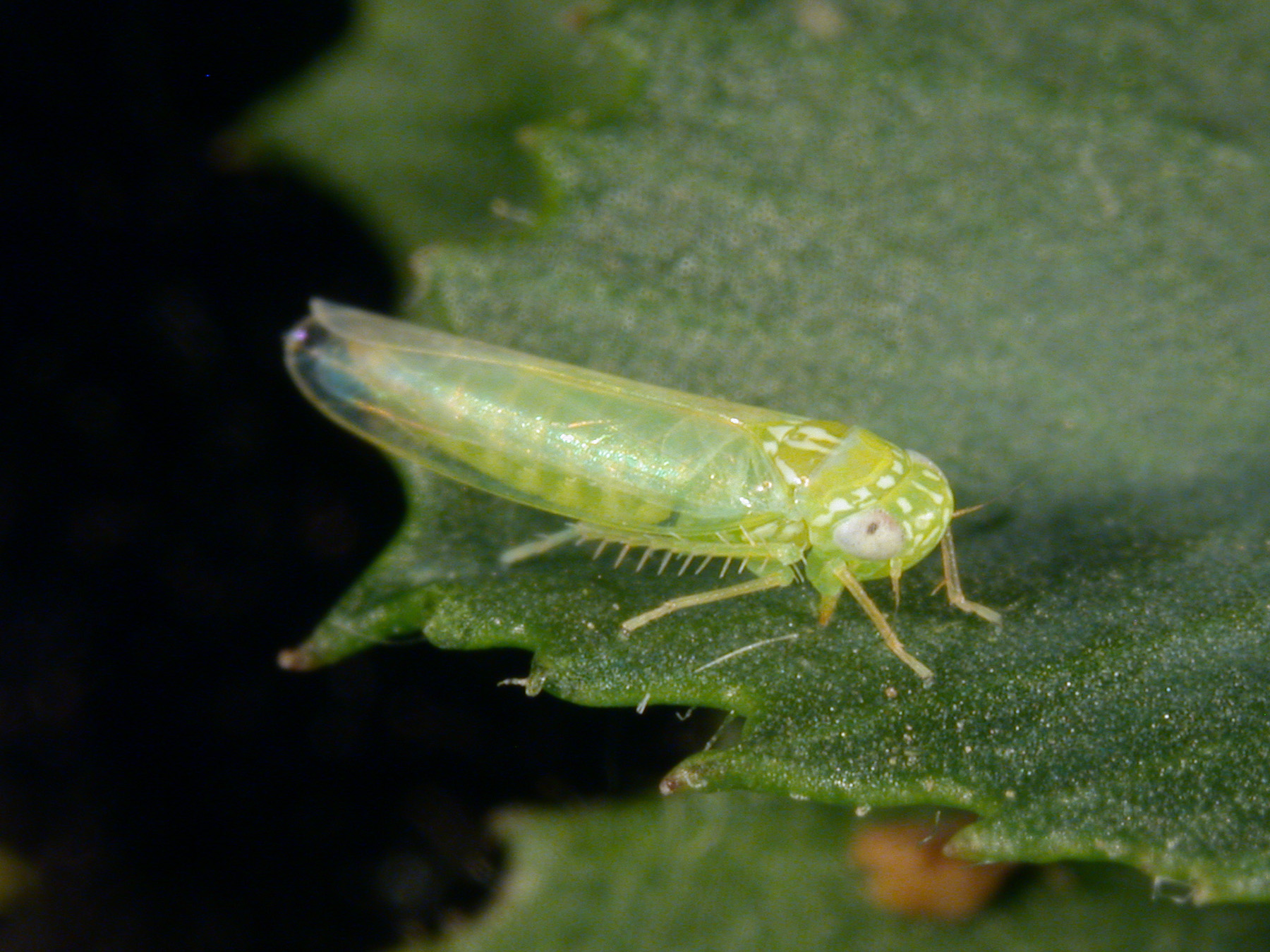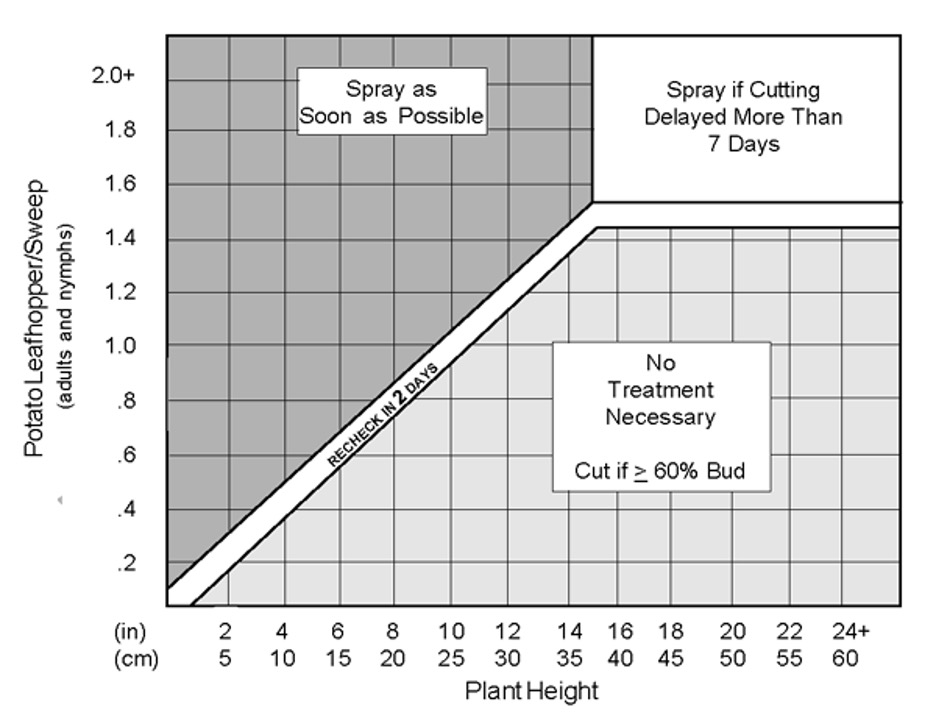Potato Leafhoppers (Forage)
Empoasca fabae Harris
Search the Pest & Crop Newsletter

Appearance and Life History

Photo by J. Obermeyer
The potato leafhopper feeds on more than 100 cultivated and wild plants including; apples, beans, potatoes, eggplant, rhubarb, celery, dahlia, peanuts, soybean, clovers, and alfalfa. It does not overwinter in the Midwest, but is annually carried northward from the Gulf Coast states by spring winds.
The adult potato leafhopper is a tiny, yellowish-green, wedge-shaped insect, about 1/8 inch (3 mm) long. The nymphal stage closely resembles the adult, except that the nymph is smaller, wingless, and brighter yellow.
Adults first appear in the Midwest by the end of April or in early May. However, damaging populations usually do not build up until later in the season. The potato leafhopper poses a serious threat to second and subsequent alfalfa cuttings, although it may damage the first cutting if harvest has been delayed.
Damage

Photo by J. Obermeyer
Both potato leafhopper adults and nymphs feed on alfalfa, but the most serious damage is caused by the nymphs. Potato leafhopper uses its piercing-sucking mouthparts to remove plant juices. As it feeds, it injects a toxin, resulting in a decrease in the plant nutritional quality. Damage symptoms first appear as wedge-shaped yellow areas on the leaf tips, and is known as “hopper burn.” As leafhopper feeding continues, discoloration spreads over the entire leaf surface, and a heavily infested field may appear yellow. If left unchecked, plant stunting and stand reduction may occur.
Sampling Method
- Begin sampling for potato leafhopper shortly after the first cutting of alfalfa has been harvested, or earlier if the first harvest is delayed.
- Continue sampling weekly until the final cutting of the season has been made.
- Avoid sweeping when excessive moisture is on the alfalfa.
Sampling:
- Walk the field in a “M” pattern.
- Take 20 continuous sweep samples with a sweep net in each of 5 areas.
- Count leafhopper adults and nymphs around the top of the net before proceeding to the bottom.
- Record only the small, yellowish-green leafhoppers and not the brown ones.
- Note other insect pests.
- Determine the average number of potato leafhopper found per sweep.
- Randomly pick 2 stems in each of the 5 areas (10 total).
- Record both maturity (i.e., pre-bud, bud, and/or flowering) and plant height for each stem collected.
- Determine the average maturity and stem length for the collected stems.
Management Guidelines
Forage Insect Control Recommendations: E-series 220-W (PDF)
- When cutting a field, harvest the entire field at one time. Avoid leaving strips of unharvested alfalfa within a field. These strips provide a refuge for leafhoppers moving out of harvested areas, allowing the population to build up in these strips and re-infest the regrowth. If it is impossible to avoid this harvest practice, treat each strip as an individual field and sample and manage accordingly. Managed strips can be used as trap crops for leafhoppers.
- For best results, fields should be evaluated for potato leafhopper 4-5 days after harvest when alfalfa is 3-4 inches tall. If spray is required, maximum benefit from leafhopper control can be achieved at this time. The number of potato leafhopper caught will vary somewhat depending upon environmental conditions and time of day the samples are taken.
- Use the chart below to determine need for control.
Management Guideline for Potato Leafhopper (adults and nymphs)

